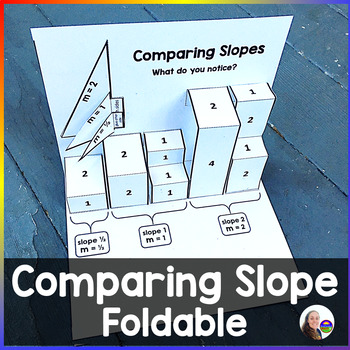Comparing Slope Flippable | Math Foldable
- PDF
Also included in
- Are you teaching summer school algebra? There are two ways to approach summer school algebra: as a punishment for slacking off all year or as an amazing opportunity to turn math attitudes around! There are reasons for taking either approach, but which has the possibility of changing a kid's life forPrice $40.00Original Price $72.00Save $32.00
Description
If your students are struggling with slope, they are not alone! This foldable allows students to see slopes 2, 1 and 1/2 and make comparisons and connections between the different rates of change. Slopes 1 and 2 are depicted in two ways each, reinforcing to students that the same slope can sometimes look different.
The foldable is very easy to build and store in student notebooks. It lays totally flat and folds completely in half, allowing students to keep it with them in their notes. The video preview is me putting it together with scissors and a glue stick.
There are 2 versions of the foldable included (both can be seen in the thumbnails and preview). The first version includes an additional 3 triangles that show slopes 2, 1 and 1/2. The triangles get glued on top of one another and can open like a book. Students can compare the triangles to the steps of the foldable and make connections. The second version leaves the triangles out.
You may also like:






